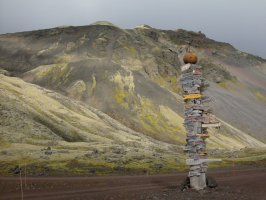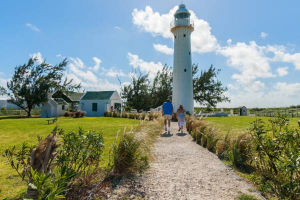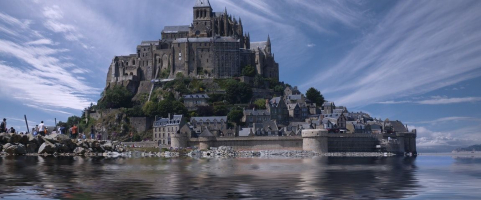Top 10 Most Beautiful Historical Sites in Bosnia and Herzegovina
Bosnia and Herzegovina is a country in Europe's western Balkan Peninsula. Bosnia and Herzegovina take up the country's northern and central regions, whereas ... read more...Bosnia and Herzegovina take up the country's south and southwest. The beautiful Mostar Bridge and the spectacular Radimlja Necropolis are among the outstanding historic attractions in Bosnia and Herzegovina. The most beautiful historical sites in Bosnia and Herzegovina are listed below.
-
Vranduk is one of the most beautiful historical sites in Bosnia and Herzegovina. Vranduk is a lovely town in Bosnia and Herzegovina notable for its ancient fortress. Vranduk, about 10 kilometers north of Zenica, is described in various preserved travelogs and manuscripts as one of Bosnia's most interesting and robust regions. A delightful spot where you can really get a sense of Bosnian tradition and culture. Small castle in a very calm and off-the-beaten-path" location. The castle features a museum inside a tower that is not free to visit. It doesn't have many displays, and the curator only knew a few words of English, but it just adds to the authenticity.
Vranduk village is built around the same-named medieval citadel, and the two together form a protected architectural assembly that is a national monument of Bosnia and Herzegovina, well preserved and well-maintained by local and state commissions for national monuments, and managed by a local tourist organization.
The medieval Vranduk Castle, which is located on a hill above the Bosna river and was formerly the home of King Stjepan Tomas, who ruled Bosnia in the mid-fifteenth century AD, is now a museum. The Fatih Sultan Mosque, built during the Ottoman period, is one of the town's other significant attractions.
Location: Zenica-Doboj Canton, Bosnia and Herzegovina
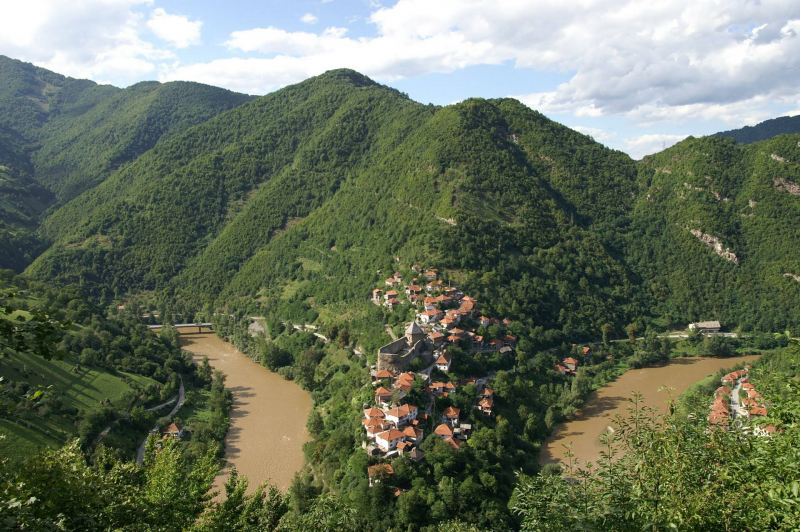
Photo: https://www.pietrangeli.com/ 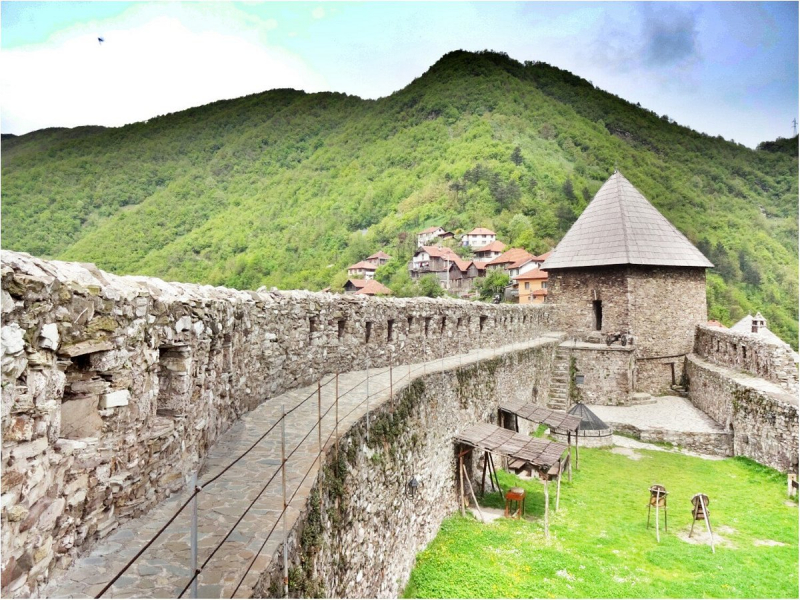
Photo: https://www.tripadvisor.com/ -
The Tjentište War Memorial is one of the most well-known of the spomeniks, or modernist World War II memorials, built in the Socialist Federal Republic of Yugoslavia. It is a sculpture and memorial complex dedicated to the fallen Partisan fighters of the Battle of the Sutjeska in 1943. It was created in the 1970s. The Tjentište spomenik is a cement angular sculpture located near the Spomen-Dom (Memory House) Museum in Sutjeska National Park.
The Tjentište and Spomen-Dom memorialize Yugoslav Partisan fighters killed in the Battle of Sutjeska, which took occurred between May 15 and June 16, 1943, as part of the Axis Fifth Enemy Offensive aimed at defeating the Partisan force in south-eastern Bosnia and Herzegovina.The Tjentite War Memorial was one of the most elaborate memorial projects in post-war Yugoslavia, as well as one of the most popular memorial locations. While the memorial complex was seriously damaged in the 1990s, efforts to conserve and restore it have been made in recent years.
The Tjentite War Memorial was renovated using UNESCO funds in 2011, and the adjacent field has been used for a summer rock music festival named OK Fest since 2014. The frescoes of the Spomen-Dom were restored in 2018.
Location: Republika Srpska, Bosnia and Herzegovina
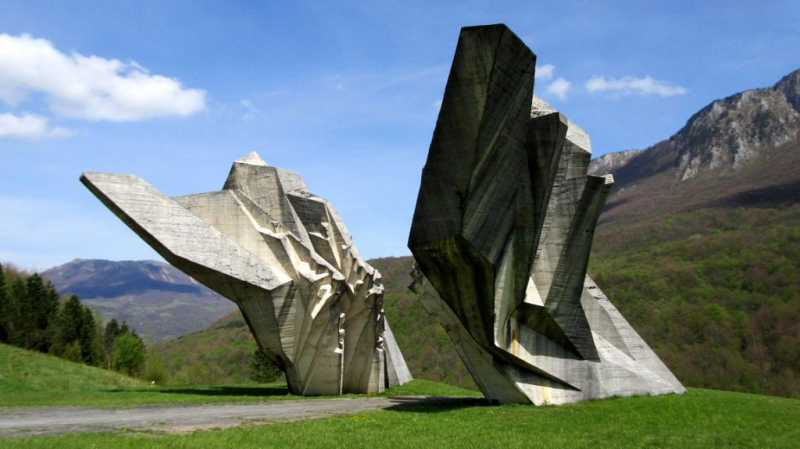
Photo: https://www.tripadvisor.com/ 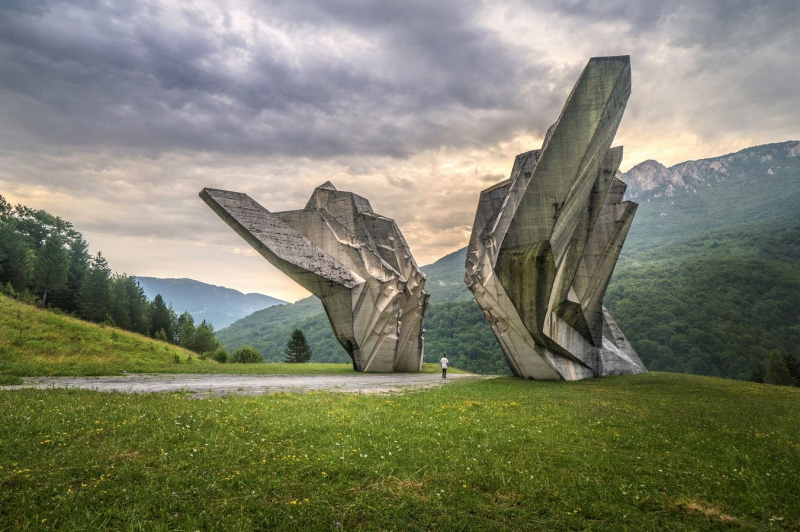
Photo: https://www.pinterest.com/ -
Known as one of the most beautiful historical sites in Bosnia and Herzegovina, Mostar Bridge, also known as Stari Most ('Old Bridge,') is a restored Ottoman bridge in Bosnia and Herzegovina dating from the 16th century. The old bridge stood for 427 years before being demolished in the Croat-Bosniak War in 1993.
Following the creation of a committee of experts by UNESCO in 1998, it was repaired after the conflict. Engineers from the Hungarian army salvaged submerged materials, while Spanish army engineers dismantled the makeshift bridge they had constructed. The Old Bridge was reconstructed utilizing Ottoman techniques and local limestone, and it was reopened on July 23, 2004.
Evliya Celebi, an Ottoman explorer in the 17th century, described it as like a rainbow arch leaping up to the clouds, spanning from one cliff to the other. It's a huge bridge that's thrown from rock to rock as high as the sky.
In Bosnia and Herzegovina, the Mostar Bridge is a renowned tourist attraction. Cliff diving competitions and a local diving tradition take place at the Mostar Bridge. In 1968, Mostar had an official diving tournament. Mostar Bridge is located in the heart of the city. Mostar is accessible by bus from Sarajevo, which takes three hours.
Location: Mostar, Bosnia và Herzegovina
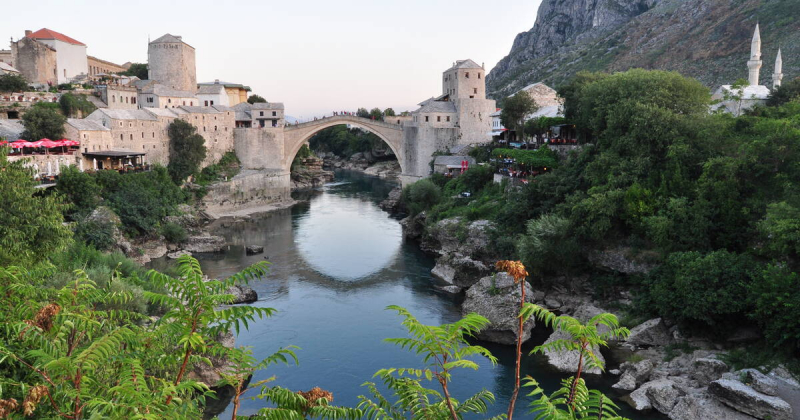
Photo: https://whc.unesco.org/ 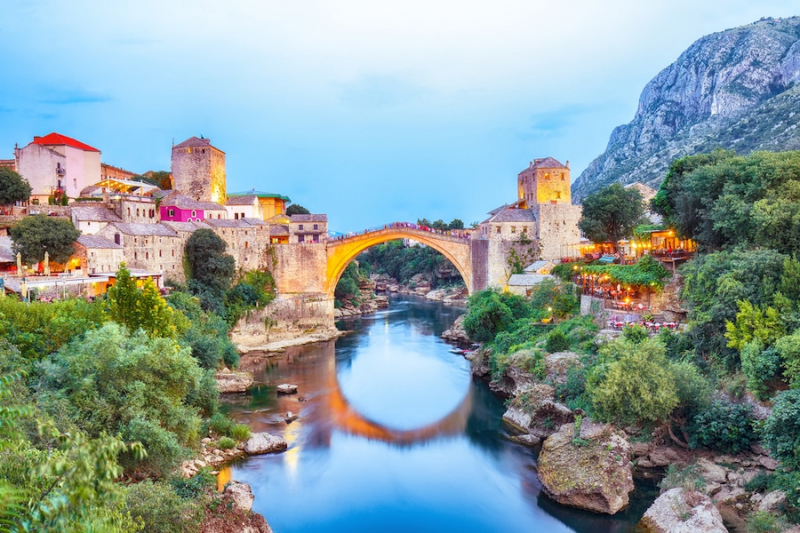
Photo: https://www.chasingthedonkey.com/ -
The Mehmed Paša Sokolović Bridge is an Ottoman-era bridge that spans the Drina River in Visegrad, Bosnia and Herzegovina's easternmost city. The Ottoman court architect Sinan designed the bridge around the end of the 16th century. He was one of the best architects and engineers of the classical Ottoman period, and his work can be likened to that of the Italian Renaissance.
The Grand Vizier Mehmed Pasha Sokolovi ordered the construction of the Mehmed Paša Sokolović Bridge between 1571 and 1577. It was designed by Ottoman architect Mimar Sinan and is 179.5 meters in length. During the Bosnian War, it was also a location where Bosniak civilians were killed. The bridge is an example of modern monumental engineering. It has 11 masonry arches ranging in width from 11 to 15 meters. On one side of the river, there is a right-angle access ramp to the bridge.
The bridge was added to the World Heritage List by UNESCO in 2007. "The property's distinctive grace of proportion and towering nobility bore testament to the glory of this form of architecture," they write. The monument is accessible by foot. Visitors can sit on the seats and enjoy the view of the Drina. The medieval bridge is located in the heart of Visegrad, which is a 2-hour car or cab ride or a long bus ride from Sarajevo's center.
Location: Republika Srpska, Bosnia và Herzegovina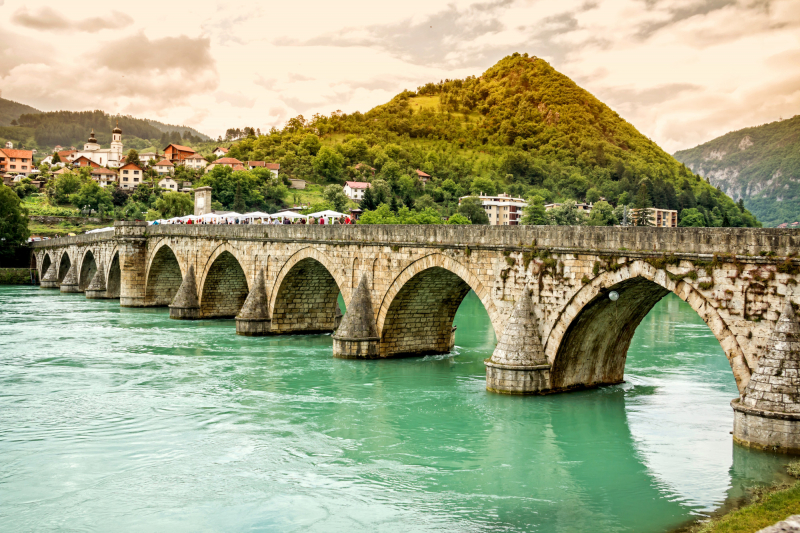
Photo: https://www.inyourpocket.com/ 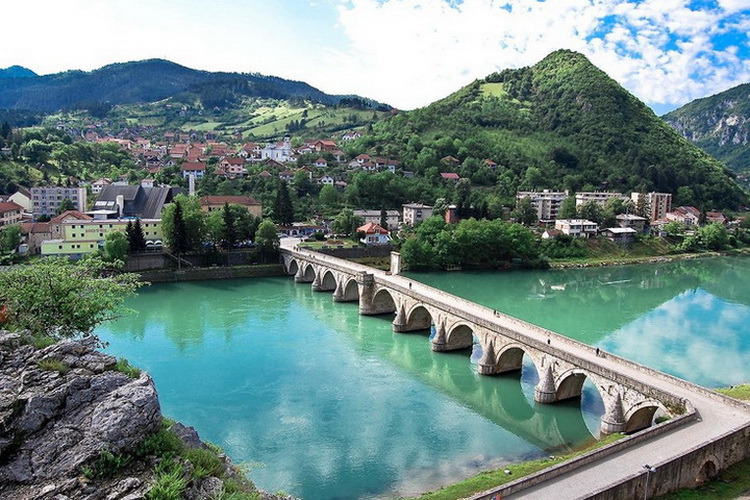
Photo: https://thesrpskatimes.com/ -
The Radimlja necropolis is one of Bosnia and Herzegovina's most important medieval monuments due to a large number of steak tombstones, the diversity and representativity of the basic shapes of these tombstones, the relatively high artistic quality of workmanship, the abundance of carved decoration, scenes in relief, and epitaphs referring to well-known historical figures, and the necropolis' unusual location and ease of access. The necropolis' beginnings may be traced back to the late 14th century when three enormous chest-shaped tombstones were carved, two of which are lavishly ornamented and feature bas-relief figural representations.
Known as one of the most beautiful historical sites in Bosnia and Herzegovina, the Radimlja Necropolis is open during the week for the majority of the day, with fewer hours on Saturday. The necropolis is free for children, but adults must pay 4KM (convertible mark) apiece. It's a fantastic site to stop for a meditation on the medieval Balkans because it's close to the main tourist road.
Radimlja Necropolis is located 3 kilometers west of Stolac, a southern hamlet on the Sarajevo-Dubrovnik tourism route. If you live near Stolac (3 km) of Mostar, the journey is simple (33 km). The Radimlja Necropolis is occasionally included in regional tours.Location: Ošanjići, Bosnia and Herzegovina
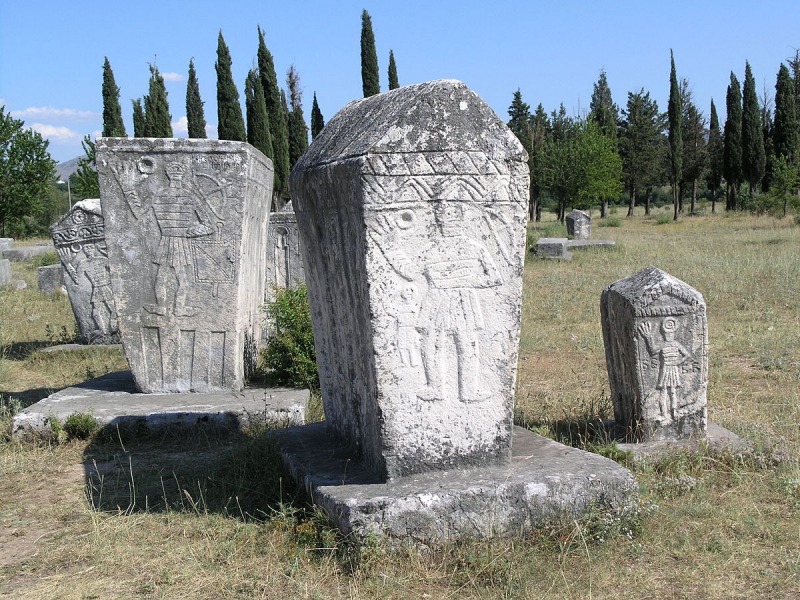
Photo: https://en.wikipedia.org/ 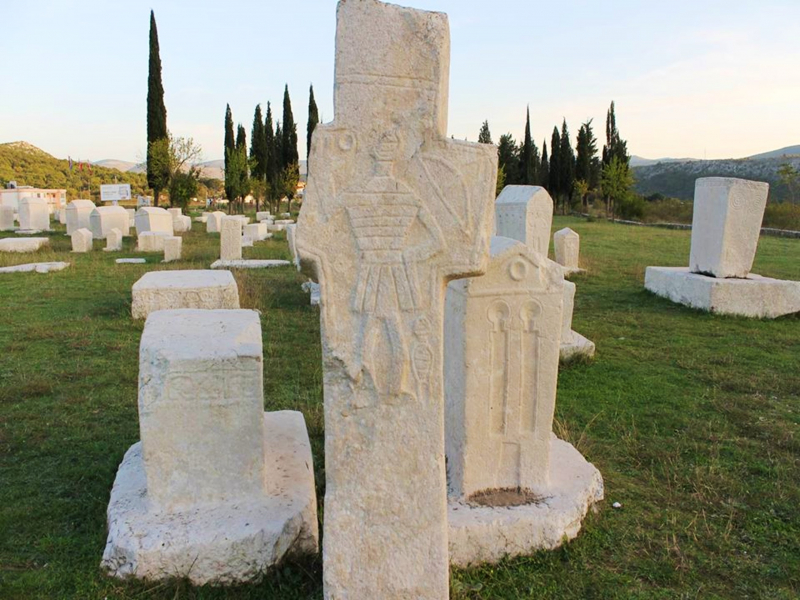
Photo: https://www.itinari.com/ -
As early as the Bronze and Iron Ages, this prominent topographic location was employed for defense (from the second millennium to the year 400 BCE: the locality of Gradina by the east tower on Vis). Roof tiles from antiquity have been discovered throughout the area, and vestiges of the earliest construction (fourth to sixth centuries) can be seen on the north wall of the Royal Castle's main tower.
Bobovac was the key to the Bosnian Kingdom as the royal seat of the Bosnian Ban Stjepan II Kotromanić, who made the first steps to create the Castle during the mid-14th century, and then as the seat of the Bosnian Kings from Tvrtko I to Tomaš, up to 1461. As a result, it was repeatedly attacked by individuals seeking to seize the Bosnian throne or destroy the Bosnian state. The Castle served as the Bosnian State's administrative and military hub, and it was there that the Bosnian royal crown was housed. The kings of Bosnia and Herzegovina, Ostoja, Tvrtko II, and Stjepan Tomaš, are all buried there. Due to the impending threat of the Ottomans, the last Bosnian King, Stjepan Tomašević (1461–1443), relocated the Royal Court to Jajce. Following the capture, the Castle of Bobovac was razed in 1463 for valid strategic reasons, as the archaeological investigation has proved. Later, the Ottomans built the buildings they needed for their presence in the Castle on the ruins of the Royal Court (1463-1626).
Location: Bobovac, Bosnia and Herzegovina
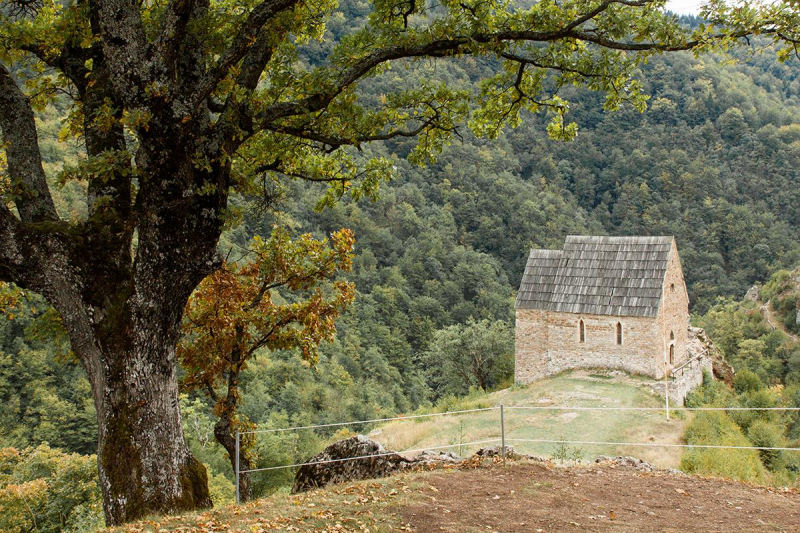
Photo: https://www.outdooractive.com/ 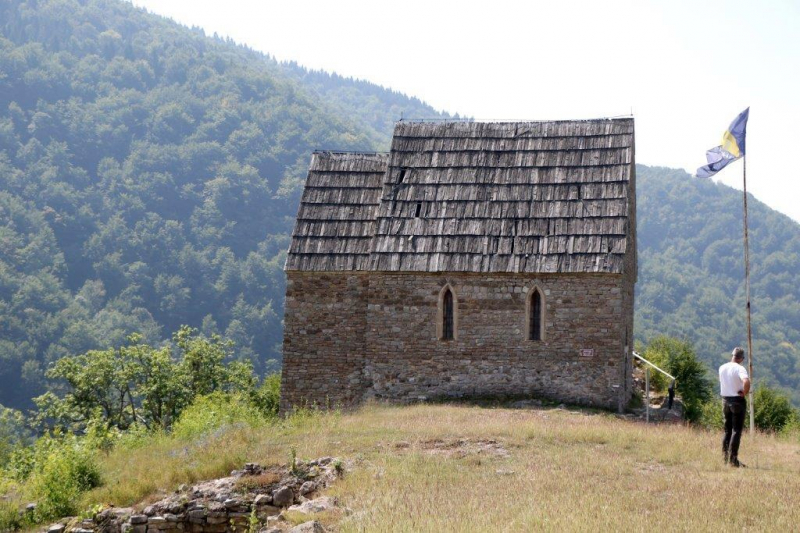
Photo: https://visitbih.ba/ -
Stari grad Jajce is the following beautiful historical site on this list. The settlement of Jajce is located on a hill above the Pliva and Vrbas rivers' confluence. The main citadel, which fills the square space of the top of the hill, and the wall, whose shape is conditioned by the land arrangement, make up the fortification of the town of Jajce.
All of the buildings in the citadel have since been dismantled, leaving only the bastion in the southeast corner of the citadel, which replaced the former towers. The citadel's courtyard is thought to have been on the east side. The south side of the citadel has a secret entrance with a relief of the coat of arms, while the west wall has a secret entrance. The town's rampart, which runs along the river Pliva and begins at the southwest and northeast corners of the citadel, features two towers: a round Bear Tower and a drop tower below.
The second wall of the ramparts now has just two visible entrance towers, one near the Vrbas with a gate and the other below the citadel itself, which has been turned into a bastion. In the Middle Ages, it appears that this wall had two more towers.
Location: Jajce, Bosnia and Herzegovina
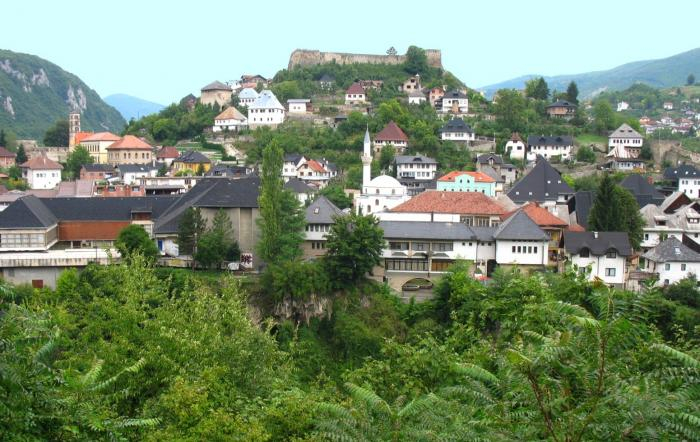
Photo: https://wikimapia.org/ 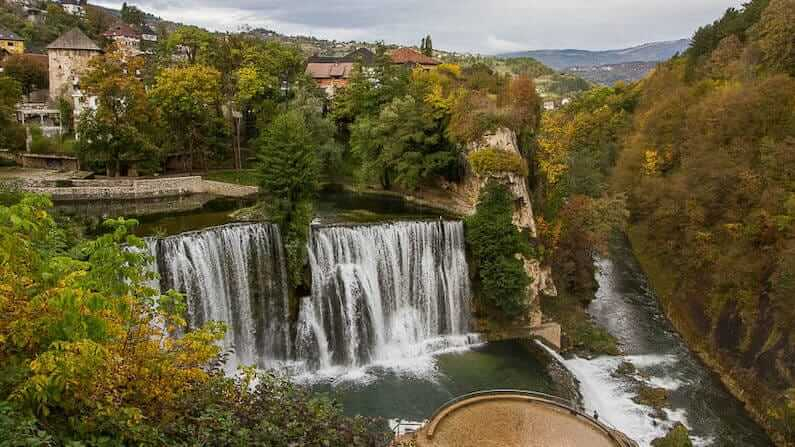
Photo: https://www.kathmanduandbeyond.com/ -
Travnik is a Bosnian and Herzegovina town and municipality. It is the administrative capital of the Federation of Bosnia and Herzegovina's Central Bosnia Canton.
Travnik was initially documented in 1463 as a stopping point for Sultan Mehmed II, the conqueror of Bosnia and Herzegovina, on his journey to Jajce. In Vlai, the town was built on a hill. The base is an irregular polygon separated into three sections: the upper city, the middle city with an ammunition tower, and the basement city with a dungeon. From north to south, these areas are located. The city gate is located in the middle of the city, on the west side, and is currently accessible by a stone bridge built on the vault, behind which the Hendek, the Lava's left tributary, flows. It's extremely likely that a drawbridge formerly stood in this location.
This town was in decent shape in 1838, and it has been repaired since 1878, so it is relatively well kept now. The occupiers discovered the Turkish crew there. The castle is now a national monument and the best-preserved in Bosnia. Inside, there is a modest museum dedicated to the city's history as well as an ethnographic part.
Location: Travnik, Central Bosnia Canton, Bosnia and Herzegovina
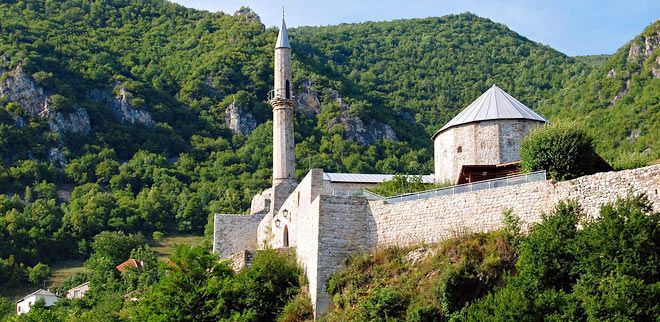
Photo: https://nl.pinterest.com/ 
Photo: https://www.pinterest.com/ -
Mogorjelo is a rare Roman archaeological monument, a well-preserved old Roman villa Rustica near Capljina in Bosnia and Herzegovina's southern region. This cultural monument is one of Bosnia and Herzegovina's most stunning late antique architecture structures. The artifacts discovered in Mogorjelo are from the fourth century. The home itself, with its wealth, attractiveness, and unique architectural style, is a treasure trove of value and beauty, surrounded by lush Mediterranean greenery.
The earliest structures date back to the 1st century when the location was used as an agricultural hub. These old structures burned down in the third century, but a splendid Roman urban plan of a Roman castrum (fort) with regular foundations and square towers at the corners (similar to Diocletian's Palace in Split) was built in their stead by the fourth century. Mogorjelo provided supplies to the Roman city of Narona and was likely used to defend the city and its environs. The Visigoths conquered and largely destroyed the castle towards the end of the fourth century. Two early Christian basilicas were built using the fort's walls in the 5th century. The villa on Mogorjelo openly presents the customs of the people in the province of late antiquity.
Location: Capljina, Bosnia and Herzegovina
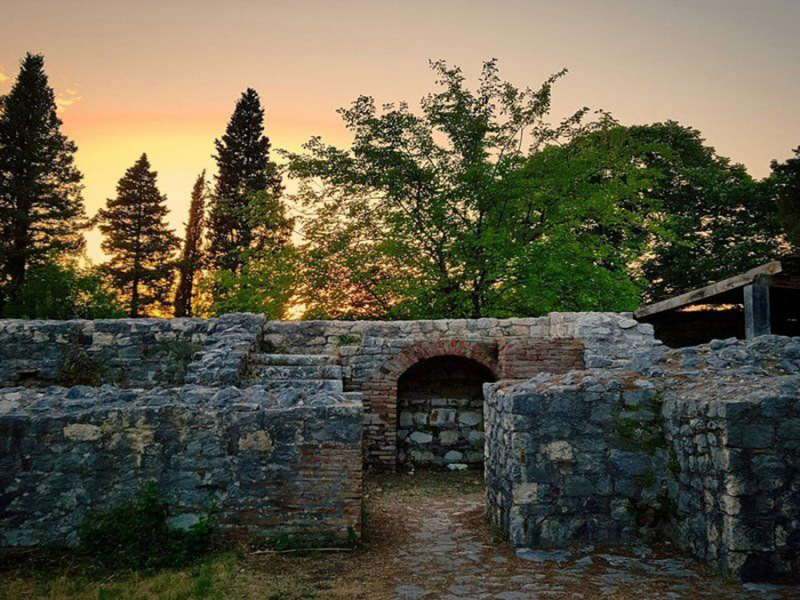
Photo: https://www.outdooractive.com/ 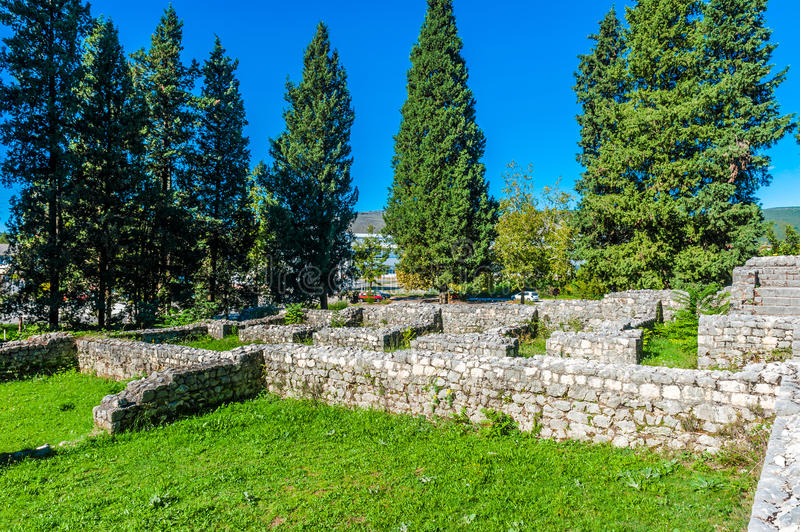
Photo: https://www.dreamstime.com/ -
Počitelj is a medieval town in Bosnia and Herzegovina that also serves as an open-air museum. It's in the municipality of Čapljina, in the Herzegovina-Neretva Canton of Bosnia and Herzegovina's Federation. The medieval town is located on the left bank of the Neretva River, on the main road Mostar-Metković, about 30 kilometers (19 miles) south of Mostar and 3 kilometers (1.9 miles) from Čapljina.
In the year 2000, the Government of the Federation of Bosnia and Herzegovina launched the Poitelj Permanent Protection Program, which includes the preservation of cultural heritage, the rehabilitation of damaged and destroyed buildings, the return of refugees and displaced persons to their homes, and the long-term protection and revitalization of Poitelj's Historic urban area. The program is still ongoing, and it is currently in the process of rehabilitating housing complexes in Poitelj's upper reaches.
Počitelj is one of the rare urban ensembles in Bosnia and Herzegovina that has been preserved in its original form to this day. It was also developed throughout numerous historical periods, beginning with the Middle Ages. Its strategic importance from the 13th through the 17th centuries enabled its residents to create one of the most remarkable and well-preserved ensembles within the city walls in the region. The town can be likened to some of the world's most famous world heritage sites, such as the old towns of Mostar and Sarajevo (Bosnia and Herzegovina).
Location: Počitelj, Bosnia and Herzegovina
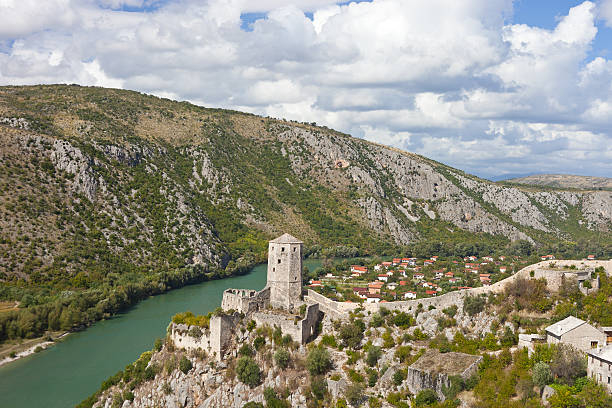
Photo: https://www.istockphoto.com/ 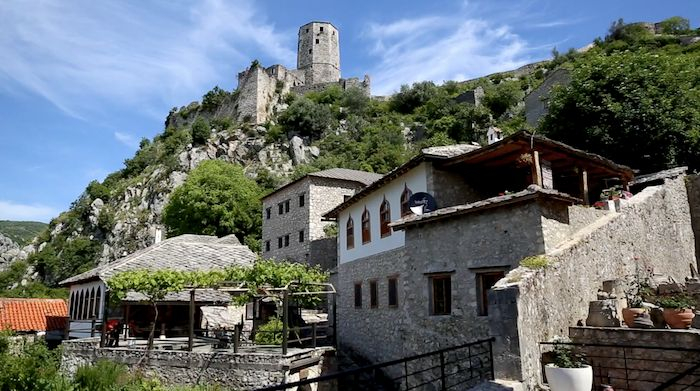
Photo: https://davidsbeenhere.com/














